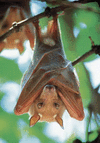I love the library...
I love the nature..
Thus I cannot ... miss this NLB garden walk at all
NLB Garden walk tours are conducted every 1st and 3rd Saturday of the month (except Public Holidays) from 4 pm to 5.30 pm in the National Library (near Bugis MRT).
I was there at the 1st Saturday of Sept mugging my zoo test when the guide came and advertise the tour. Thus I made up my mind to come back 2 weeks later to join the tour.
On that day, I thought it started at 4.30 pm and was taking my own sweet time to reach there. Luckily the moment I stepped into the library, they were just gathering. And they even gave some souvenirs to us, the participants. Considering the tour is free, it came as a shock to me. What impressed me more is the guide (I followed the English guide), because of how well prepared she is. I went to this walk partly to see how other guides conduct their tour (having been so impressed by the botanical garden tour guide) and I learnt a lot from her.
She started the tour by giving us each a list of the plants we can find in NLB and some books we can reference from. Afterall we are in the library so of course must publicise the books and encourage us to borrow haha. Then she started the touring around level 1.
Peacock Plant, Prayer Plant

I like this plant for its unique feature of being in a prayer position when the sun sets due to a knot in its stem, allowing it to "open" and "close". It is sensitive to sunlight, and its pattern is quite special. Oh and one can see such plant in the zoo too haha...
Young Frond

New leaves typically expand by the unrolling of a tight spiral called a crozier or fiddlehead. This uncurling of the leaf is termed circinate vernation. (Source:
Wiki)
Giant Fish Tail Palm

I like this palm alot. Looks like fish tail right?
Taking a look at the view from the top... about the 5th level of NLB.. supposedly it should be a nice view but guess my camera was unable to capture it...
 Umbrella Tree, Octopus Tree
Umbrella Tree, Octopus Tree

Another cute plant ... seems like you can hide from the rain with this tree.
Bamboo

I always like the view at B1 with the bamboo trees outside. Now that I'm taking it top down, it looks just as lovely. At this point, the guys were all sharing the uses of bamboo... Oh ya they mentioned about bamboo flowers every 35-50 years and the flowers will attract the rats. This will cause the rat population to rise and rat infestation to happen where there might be a shortage in food after all the flowers are eaten. One of nature at work's phenomenon. Hmm you can read more about it
here.
Sweet Paddle Plan, Sweet Prayer Plant

Similar to the prayer plant, it will "open" and "close" by the availability of light.
Peppermint

Always like peppermint plant... that minty feel...
Windowleaf Plant, Swiss Cheese Plant

Another plant that left a deep impression on me. Such holes allowed sunlight and rainwater through which will help those plants below it. And these natural holes are supposed to keep insects from eating it. The mentality is that when the insects see holes, they will feel that someone has eaten it and will not want to feast on it. Haha good disguise. More about it
here.
Plants in your purse

The tour guide ended the tour by saying we carry plants in our purse too. I'm impressed by the laminated notes she made and the "props" (e.g. a bottle of figs - oh and she also mentioned the story of the wasp and fig which I heard in botanical garden then) she brought. She was also very nice.. came and tell me I can take a photo of this.. and was patiently holding it still for me to capture the shot. Really thank you so much. Unfortunately I did not catch her name then.
(Extra info about the National Library from the souvenir given)
The journey begins with Sir Stamford Raffles (1823), who had a vision to instill a library within the Singapore Institution so as to "collect the scattered literature and traditions of the country". The vision became a reality in 1844 with the establishment of a private library called the Singapore Library. The institution eventually evolved to an icon Singapore fondly remembered as the Stamford Road "red brick" building.










